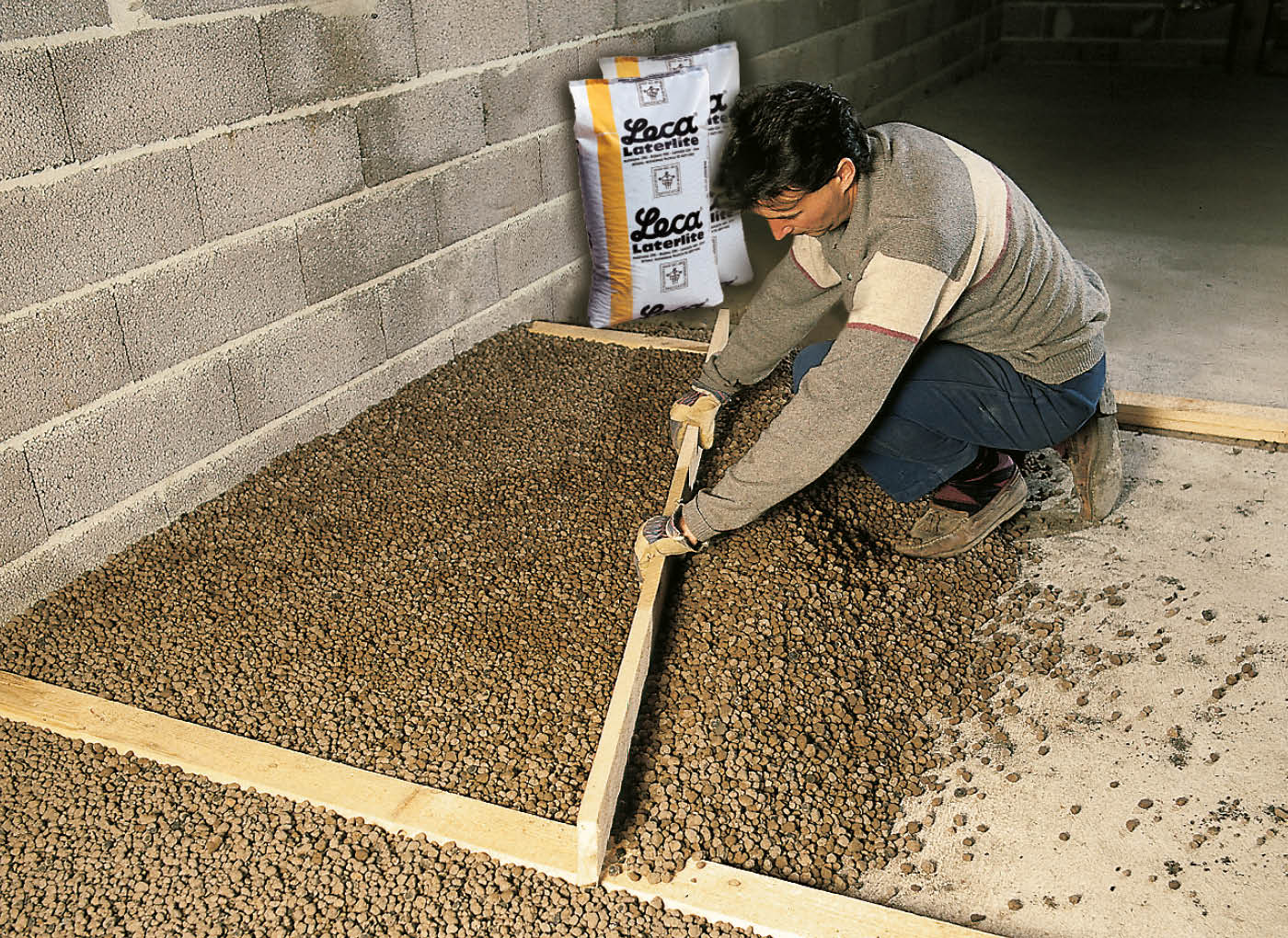Laterlite Expanded Clay can also be used in association with other insulating materials:
- for levelling uneven support surfaces to make them suitable for laying insulating panels or rolls.
- for high-performance solutions that optimise the thermal performance of the roof in summer (better thermal lag, temperature damping, and periodic thermal transmittance) and winter (U-value) by significantly increasing its thermal mass and thermal inertia.
- to create a safety distance between chimneys and hot pipes, preventing the ignition of any combustible types of insulation that may also be present.
Laterlite Expanded Clay is effective as thermal insulation because of its low lambda value (thermal conductivity). Being denser than traditional insulating materials, it increases the thermal mass and the thermal inertia of a roof and attenuates summer overheating in the spaces below (better thermal lag, temperature damping, and periodic thermal transmittance). This is particularly beneficial in the case of roofs of timber, steel, or other lightweight construction. Laterlite Expanded Clay is also a very vapour open insulation, in other words, it’s breathable.
Laterlite Expanded Clay can be used in combination with other insulating materials to create high performance solutions that optimise thermal performance in both summer and winter; it offers remarkable thermal inertia and allows easy levelling of the supporting surface for the laying of the topping layers.
Expanded clay insulation is totally mineral and incombustible (Euroclass A1), resistant to high temperatures, and can safely be placed in direct contact with chimneys and flues with no risk of ignition or damage.
As a refractory material it is also commonly used for insulating the chimneys themselves and for manufacturing precast components exposed to high temperatures (chimneys, fireplaces, ovens, etc).
Laterlite and Laterlite Plus Expanded Clay can be laid loose and levelled to the desired thickness without requiring any treatment to the top surface.
If the top surface is to take foot traffic it can be covered by panels (wood, fibre cement, gypsum fibre etc.) or bound with a cement or lime slurry.
To meet particular requirements the insulating layer can be made from pervious ultra-lightweight premixed concretes (Latermix Cem Classic) or by mixing the whole layer of expanded clay with cement or lime.
Prior to implementation, the airtightness and load-bearing capacity of the supporting slab should be assessed, considering the additional weight of the new insulating layer.







